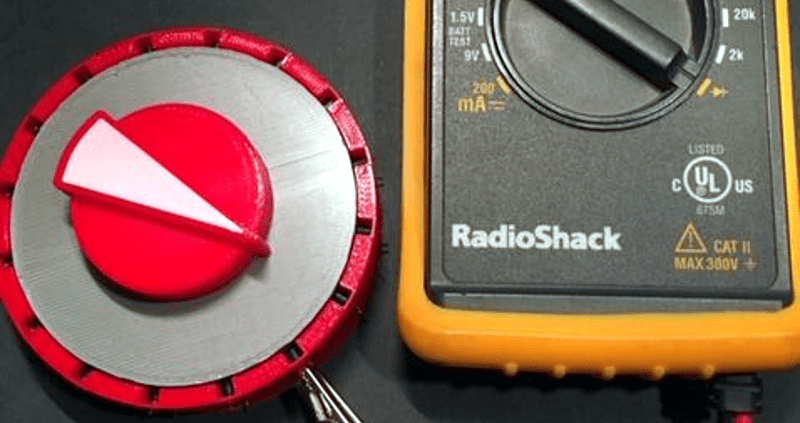There are certain challenges we all will have to face sooner or later. Changing a flat tire in the rain, trying to put on a shirt that doesn’t quite fit, or producing a 16 position rotary switch for a replica computer front panel. There was a time when something like this would be a major undertaking, but with the help of a 3D printer [Mike Gardi] was able to build good looking switches that were big enough to be motor driven.
Switches of course are old tech, and there are plenty of ways to make contacts. [Mike] settled on using 16 small magnets and reed switches. This works, but you probably wouldn’t want to use it where the switch might get close to an external magnet. It does however make for a neat assembly without a lot of mechanical work. It also resists wear compared to a brush type arrangement.
The switch is a little large, but it could probably be made smaller with proper contacts. However, you still need at least some magnets to provide the detents without making mechanical changes.
We couldn’t help but think of the homemade rotary switches from the do it yourself computer that used sewing thread spools, wires, and paper clips. It would be fun to revisit that computer with an eye to making things using a 3D printer. We liked the knob, but if you only need a reproduction knob, there are other ways to go.
















I really like the gentler haptic like feel of a motorised rotary switch so the little reed relay clicks would be nice too with just a little magnetic cogging too. Of course one could do most in software using quadrature and semiconductors and with tiny magnets around the axis too but, for some instrument applications the reed switch wins out though only for lower voltages if directly connected ie off is really off no nA leakage. Nothing wrong with feeding the reed switches to big relays school as for mains cycling serious load testing – though in that case delay/timing would be helpful, don’t want to see power relays go nuts when spinning the dial – except on destructive testing regimes naturally :D
Thanks for posting :-)
Thank you very much for the idea. This was the missing part for my Minivac601 Emulator, see https://hackaday.io/project/12000-homebrew-minivac-601-computer I used a less painful approach with normal Breadboards for the connections and 18 little boards with male headers with relay, and LED / resistor, slide switch and push button. Just the rotary switch was missing – and this approach allows for manual use and for adding a motor. Thank you very very much
Those reed switches are too close to each other… Just make sure the project won’t explode if you activate two of them at the same time…
It is difficult to envision the size of this switch, Digital Multi-Meters, such as the one pictured next to it, vary so much in size. I wish he had placed it against a better reference, such as a banana.
Too true, need a suitable reference:-
https://www.sbs.com.au/yourlanguage/sites/sbs.com.au.yourlanguage/files/styles/full/public/original_9611034_hg34_banana1lores_65de64j.jpg
B^)
I just had a funny idea:
There was an article, some time ago, about using a cheap stepper motor as an encoder. This could be expanded:
Energize one coil (*) to create detents and use the induced voltage as quadrature signals.
*) energize it via a resistor to be able to measure it’s induced voltage.
If you want to move the knob electrically you can use the stepper motor.
this?
https://www.youtube.com/watch?v=tjCJ3MlFt7g
Too bad the 3D printing pattern makes it look really cheap.